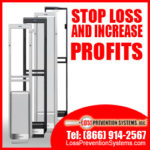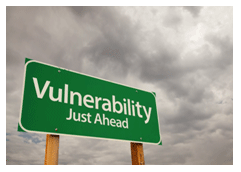
The use of cellphones in the workplace has become more prolific over the years. It used to be that managers could put out a policy stating that the use of cellphones was strictly forbidden. I used to be in this camp and to a certain extent, I still am. As a Loss Prevention Manager, I saw the negative impact phones could have on customer service. Employees would focus on the phone at the expense of the customers. When the culprit was a cashier I would see the violators of the policy hiding the phone next to the register and texting in the midst of a transaction. That was totally unacceptable and did on more than one occasion result in a register error. Either merchandise was not properly scanned or the wrong change was tendered to the customer. In several cases, I had cashiers texting family and friends telling them to come in and go through their checkout lane. This would result in theft through passing or “giving back too much change” commonly known as cash theft. Of course, using the phone as a means of stealing from the store was the ugly of the cellphone issues.
The bad side of the cellphone conundrum is the customer service issues they cause. You have seen it, the sales floor employee looking at their phone and texting or looking through their music. Eye contact is almost non-existent. As a shopper, this drives me up to the wall. If the employees would spend as much attention to shoppers as they do their phones I can only begin to imagine the increased sales stores would enjoy. Now, as a manager in a college library, I have student assistants working for me who all have phones and most carry the phone in their back pockets. We have policies restricting when they can use the phone but often I have to correct them when they violate the policy and pull the phone out and begin texting. We have the policy in place for the same reasons that stores have (or used to have) the policy; to ensure customer service is the number one priority. Making the enforcement of the policy more difficult is that other supervisors are pulling out their phones and using them. This seems a bit hypocritical in my view.
There is a good side to allowing cellphones in a retail or customer service environment and it has softened me just a tad to the arguments in favor of them. If a store employee is on the sales floor and sees suspicious activity from a potential shoplifter the employee can quickly get in contact with a manager without looking for a store phone. 2-way radios are not always the most effective communication devices. Some associates keep the volume on their radios turned up and even if an earpiece is in use conversations can be overheard. I have had shoplifting suspects hear employees talking and drop merchandise as I was preparing to stop them for stealing. I have also seen customers get angry when they heard employees talking about them over radios. It could be talking about the customer’s behavior or something the customer was saying that was causing a disturbance. For example, the customer could be causing a scene about a return they were trying to do that was refused. Radios are just not always the best communication tool from a safety or security perspective. Cellphones make a convenient and more discreet method of communication and can even include text messaging which isn’t heard at all.
Another pro-cellphone argument is the ability to summon help in a store in the event of an emergency. As we see in social media today there is hardly a significant event that can take place without someone(s) getting it on a cellphone camera. From natural disasters to vehicle accidents and even active shooters, right or wrong people are going to get video and messages out and post it. The more employees that are allowed to carry their phones the greater the likelihood first responders will be notified quickly from multiple sources in the store. Think about the advantages this could have in the event of an altercation or robbery. Someone is likely to get through to authorities much quicker than if a store phone is the only accessible communication device.
As much as they can be a pain in the neck to retailers, cellphones are here to stay. By laying out expectations and policies regarding when they can be used managers can try to manage the use of phones while being flexible in allowing them to be in an employee’s possession. Who knows, such a policy might be a lifesaver someday…literally.




 It is January and you are ready to get started on your new year. What does the start of a New Year look like for your business? Are you still trying to move out seasonal and clearance merchandise? Are you preparing to trim back payroll by releasing seasonal employees? Maybe you are already thinking about inventory and what you will need to do to prepare for that day. There are all sorts of ways retail owners and managers start the New Year but I would suggest that before you look forward you take time to look back on the previous year.
It is January and you are ready to get started on your new year. What does the start of a New Year look like for your business? Are you still trying to move out seasonal and clearance merchandise? Are you preparing to trim back payroll by releasing seasonal employees? Maybe you are already thinking about inventory and what you will need to do to prepare for that day. There are all sorts of ways retail owners and managers start the New Year but I would suggest that before you look forward you take time to look back on the previous year. Have you ever noticed how we all anticipate a New Year will bring new and exciting things into our lives (or businesses) but after the first month we often realize that nothing is new or improved or better? In fact, we may be disappointed as the year progresses that problems we hoped would be resolved (read, “magically disappear”) are still there. We make resolutions at the beginning of the year that are meant to help “improve” or “fix” something we know is an opportunity but then we slide back into our routines and those “problems” don’t get any better.
Have you ever noticed how we all anticipate a New Year will bring new and exciting things into our lives (or businesses) but after the first month we often realize that nothing is new or improved or better? In fact, we may be disappointed as the year progresses that problems we hoped would be resolved (read, “magically disappear”) are still there. We make resolutions at the beginning of the year that are meant to help “improve” or “fix” something we know is an opportunity but then we slide back into our routines and those “problems” don’t get any better. It’s 2019 and time to make some New Year’s resolutions! We all know how easy a resolution can be to make but they are hard to keep. We also know that it is just as easy to break a resolution but are there resolutions a store owner can make that would benefit the store AND benefit society? I think one resolution that would be mutually beneficial for both would be the implementation of environment-friendly policies and procedures. We are talking about sensible measures that would appeal to anyone on either side of the political spectrum. Right now there is a big push for the elimination of plastic shopping bags. There are also those opposed to going back to paper bags. What could the solution be? Try encouraging the use of recyclable, reusable shopping bags for your customers. You make those opposed to one-time use bags happy and you save money on the need to regularly purchase more shopping bags (which can be a rather pricey supply on your monthly expense report). To implement this type of change you would want to have reusable bags ready for your customers and you might even give them away for the first few weeks you start the program. After that, you might give customers a small discount to customers who bring their own bags, say 1% on every transaction.
It’s 2019 and time to make some New Year’s resolutions! We all know how easy a resolution can be to make but they are hard to keep. We also know that it is just as easy to break a resolution but are there resolutions a store owner can make that would benefit the store AND benefit society? I think one resolution that would be mutually beneficial for both would be the implementation of environment-friendly policies and procedures. We are talking about sensible measures that would appeal to anyone on either side of the political spectrum. Right now there is a big push for the elimination of plastic shopping bags. There are also those opposed to going back to paper bags. What could the solution be? Try encouraging the use of recyclable, reusable shopping bags for your customers. You make those opposed to one-time use bags happy and you save money on the need to regularly purchase more shopping bags (which can be a rather pricey supply on your monthly expense report). To implement this type of change you would want to have reusable bags ready for your customers and you might even give them away for the first few weeks you start the program. After that, you might give customers a small discount to customers who bring their own bags, say 1% on every transaction. For a loss prevention officer, the holiday season is a hard time to be jolly when the busiest shopping season of the year brings with it its shoplifters, crime, and theft.
For a loss prevention officer, the holiday season is a hard time to be jolly when the busiest shopping season of the year brings with it its shoplifters, crime, and theft. It’s here! The holiday season and there is a spirit of goodwill that hopefully we all share towards each other. For retail owners and managers the joyful spirit is boosted when sales are good as customers are buying gifts and purchasing foods for baking and holiday meals. For the most part people seem to be a bit more patient towards each other (except maybe in a mall parking lot where drivers fight for the best parking places). It really is the most wonderful time of the year!
It’s here! The holiday season and there is a spirit of goodwill that hopefully we all share towards each other. For retail owners and managers the joyful spirit is boosted when sales are good as customers are buying gifts and purchasing foods for baking and holiday meals. For the most part people seem to be a bit more patient towards each other (except maybe in a mall parking lot where drivers fight for the best parking places). It really is the most wonderful time of the year!